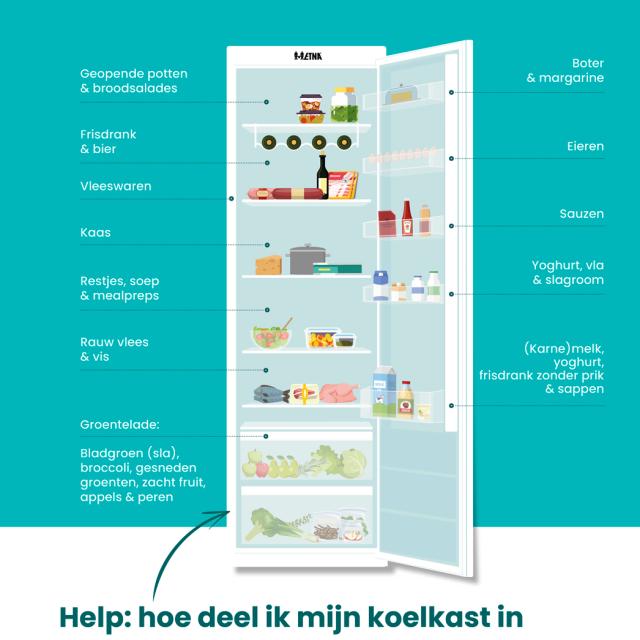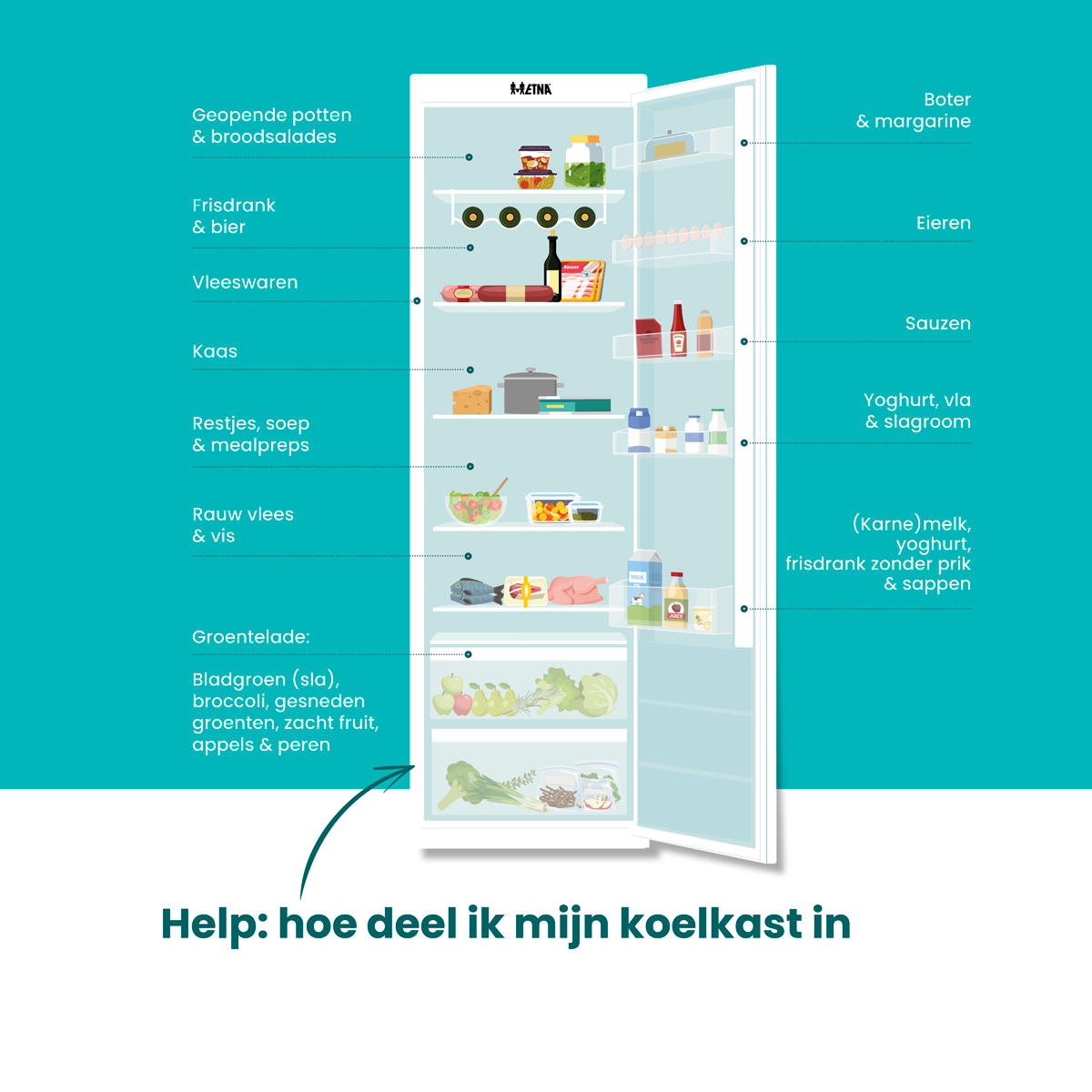
During the winter months we do our best to save energy, but we also have to be careful during warm periods. The refrigerator and freezer are working overtime, even when we are on holiday. Read here 5 tips for an energy-efficient refrigerator and freezer during the summer holidays.
Even during the summer and especially during the summer holidays, your refrigerator and freezer are working for hours. So read here for 5 handy tips for energy-friendly cooling.
1. Time for BBQ
A fun barbecue also means a full fridge: from drinks and vegetables to meat, sauces and salads. We often tend to put all groceries in the fridge quickly, it can only be cooled. Yet that costs a lot of extra energy every time.
Vegetables such as cucumber, tomato, onion and peppers are best stored outside the refrigerator, as are many types of fruit. You also do not need to put unopened sauces in the refrigerator immediately, unless they come from the refrigerated section in the store. After opening, it is best to store sauces at the top of the refrigerator.
Meat and fish are best stored at the bottom of the refrigerator compartment, because it is colder there. Nowadays you also have refrigerators with a constant temperature (MultiFlow) throughout the refrigerator, but not all models have that.
2. Holiday mode: on
Are you going on holiday? Then put the refrigerator in holiday mode, on a lower setting or completely off if possible. This will save energy and costs. If you turn the refrigerator off completely, make sure the door is slightly ajar to prevent unpleasant odours.
3. Look at it from the other side
We usually look in the fridge, but we also regularly check the rubber edge around the door. That can be scary, because if you never clean it, you will see that grease and dirt will collect here. Not hygienic, but also not energy-friendly. The door then closes less well, which means that the fridge constantly uses extra energy.
4. Energy label and consumption
If you are ready for a new refrigerator, it is wise to also look at the energy label. The higher the energy label, the more energy-efficient the refrigerator is. It is also important not to overlook the energy consumption in kilowatt hours per year. This shows how much electricity a refrigerator or freezer uses per year. Because a large refrigerator with energy label C most likely uses more energy per year than a table model with the same energy label. Please note that products with a higher energy label are often more expensive to purchase, so calculate carefully which energy label is most advantageous for you.
5. Frozen
Does your refrigerator have a freezer compartment? Then it is good to know that you have to defrost a freezer compartment five to six times a year. This is not only because of the space that the ice formation takes up, but also because the ice layer forms a natural insulation layer. Your refrigerator has to work harder to reach the set temperature, which results in more energy consumption. A company like ETNA has a solution for this: No-Frost Plus, which keeps the freezer compartment free of ice and frost formation. Defrosting is no longer necessary. This also prevents condensation in the cooling compartment.
